|
Books Should Be Free Loyal Books Free Public Domain Audiobooks & eBook Downloads |
|
|
Books Should Be Free Loyal Books Free Public Domain Audiobooks & eBook Downloads |
|
Dramatic Works |
|---|
|
Book type:
Sort by:
View by:
|
By: Henrik Ibsen (1828-1906) | |
|---|---|
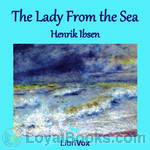 The Lady From the Sea
The Lady From the Sea
The title character in Ibsen's drama, Ellida Wangel, is married to a prosperous doctor, but feels stifled by her roles as wife and stepmother to her husband's two daughters by a previous marriage, Hilde and Bolette. Ten years earlier she had promised to marry another man - and on a sultry summer day, he comes back to her. Ellida must decide whether to choose the safety of her life with Wangel, or to yield to the siren song of the sea. | |
 Little Eyolf
Little Eyolf
Henrik Ibsen's 1894 play Little Eyolf tells the story of the Allmers family: the father, Alfred, his wife Rita, their crippled nine-year-old son Eyolf, and Alfred's sister Asta. As the play begins, Alfred has just gotten back from a trip to the mountains, and resolves to spend more time with his son, rather than on intellectual pursuits. Asta is romantically pursued by Borgheim, an engineer, while the cracks in Alfred and Rita's marriage gradually reveal themselves. The family receives a visit from the Rat-Wife, and are never the same again. | |
 The Wild Duck
The Wild Duck
The Wild Duck (1884) (original Norwegian title: Vildanden) is by many considered Ibsen's finest work, and it is certainly the most complex. It tells the story of Gregers Werle, a young man who returns to his hometown after an extended exile and is reunited with his boyhood friend Hjalmar Ekdal. Over the course of the play, the many secrets that lie behind the Ekdals' apparently happy home are revealed to Gregers, who insists on pursuing the absolute truth, or the "Summons of the Ideal". Among these truths: Gregers' father impregnated his servant Gina, then married her off to Hjalmar to legitimize the child... | |
 Rosmersholm
Rosmersholm
Rosmersholm is a play written in 1886 by Norwegian playwright Henrik Ibsen. In the estimation of many critics the piece is Ibsen’s masterwork, only equalled by The Wild Duck of 1884. As expressed by the protagonist, Rosmer, the theme of the play is social and political change, in which the traditional ruling classes relinquish their right to impose their ideals on the rest of society, but the action is entirely personal, resting on the conduct of the immoral, or amoral, “free thinking” heroine, Rebecca, who sets herself to undermine Rosmer’s religious and political beliefs because of his influential position in the community... | |
 Pillars of Society
Pillars of Society
Pillars of Society was Ibsen's first successful realist drama, first performed in 1877. Karsten Bernick is the dominant businessman in a small coastal town in Norway, with interests in shipping and shipbuilding in a long-established family firm. Now he is planning his most ambitious project yet, backing a railway which will connect the town to the main line and open a fertile valley which he has been secretly buying up. Suddenly his past explodes on him with the arrival of Lona Hessel, the woman he once jilted, and Johan Tonnesen, who left town in disgrace fifteen years earlier. | |
 John Gabriel Borkman
John Gabriel Borkman
John Gabriel Borkman is the penultimate play of the Norwegian playwright Henrik Ibsen, written in 1896. The Borkman family fortunes have been brought low by the imprisonment of John Gabriel who used his position as a bank manager to illegally speculate with his investors' money. The action of the play takes place eight years after Borkman's release when John Gabriel Borkman, Mrs. Borkman, and her twin sister Ella Rentheim battle over the future of young Erhart Borkman. Though John Gabriel Borkman... | |
 Little Eyolf (Mencken Translation)
Little Eyolf (Mencken Translation)
One of the four profound plays of Ibsen’s late period (along with “The Master Builder,” “John Gabriel Borkman,” and “When We Dead Awaken”), “Little Eyolf” tells the story of Albert Allmers, a writer who has yearned to leave behind a literary or philosophical legacy of some kind, but who finally decides to invest that yearning in the life of his little handicapped son, Eyolf. Rita Allmers loves her husband so obsessively that she hates any rival for his affection, whether it be Allmer’s literary magnum opus, Little Eyolf himself, or Albert’s strangely devoted sister Asta... | |
By: Henry Fielding (1707-1754) | |
|---|---|
 An Apology for the Life of Mrs. Shamela Andrews
An Apology for the Life of Mrs. Shamela Andrews
An Apology for the Life of Mrs. Shamela Andrews, or simply Shamela, as it is more commonly known, is a satirical novel written by Henry Fielding and first published in April 1741 under the name of Mr. Conny Keyber. Fielding never owned to writing the work, but it is widely considered to be his. It is a direct attack on the then-popular novel Pamela (November 1740) by Fielding's contemporary and rival Samuel Richardson and is composed, like Pamela, in epistolary form. Shamela is written as a shocking revelation of the true events which took place in the life of Pamela Andrews, the main heroine of Pamela... | |
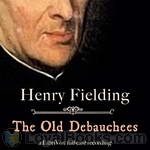 The Old Debauchees
The Old Debauchees
Young Laroon plans to marry Isabel, but Father Martin manipulates Isabel's father, Jourdain, in order to seduce Isabel. However, other characters, including both of the Laroons, try to manipulate Jourdain for their own ends; they accomplish it through disguising themselves as priests and using his guilt to convince him of what they say. As Father Martin pursues Isabel, she is clever enough to realize what is happening and plans her own trap. After catching him and exposing his lust, Father Martin is set to be punished. | |
By: Henry James (1843-1916) | |
|---|---|
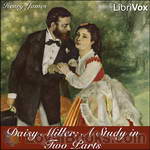 Daisy Miller: A Study in Two Parts
Daisy Miller: A Study in Two Parts
Daisy Miller is an 1878 novella by Henry James. It portrays the confused courtship of the eponymous American girl by Winterbourne, a compatriot of hers with much more sophistication. His pursuit of her is hampered by her own flirtatiousness, which is frowned upon by the other expatriates they meet in Switzerland and Italy. Her lack of understanding of the social mores of the society she so desperately wishes to enter ultimately leads to tragedy. | |
By: Henry Lawson (1867-1922) | |
|---|---|
 Dramatic Selections from Henry Lawson's Short Stories
Dramatic Selections from Henry Lawson's Short Stories
01. That Pretty Girl in the ArmyThe Salvation Army is having a hard time of things in the rough Outback town of Bourke. That is, until Sister Hannah arrives... - Summary by Son of the Exiles Coordinated by: Son of the Exiles Sister Hannah: Devorah Allen Jack Moonlight: Tomas Peter Billy Woods: Jim Locke Jake Boreham: Larry Wilson Reformed Drunkard: Wayne Cooke Bob Brothers: Algy Pug Mitchell: Alan Mapstone Donald Macdonald: Michele Eaton One-Eyed Bogan: lorda Female Testifier: Lauren-Emma Blake Blunderer: Therese Lindholm Black Testifier: Wayne Cooke Heckler: ToddHW Narrator: KHand 02... | |
By: Hesba Stretton (1832-1911) | |
|---|---|
 Jessica's First Prayer and Jessica's Mother
Jessica's First Prayer and Jessica's Mother
Jessica is a little girl who used to be an actress till she grew too big. Now she lives on the streets, mostly starving until she meets Mr. Dan'el. Mr. Dan'el gives Jessica his cast-off crusts and warmed-over coffee. Jessica follows Mr. Dan'el to a building where a bunch of people sing and then listen to a man tell them about someone named God. Jessica wants to know who God is so she sneaks into listen every Sunday, hoping she won't be found out. | |
By: Homer Greene (1853-1940) | |
|---|---|
 Blind Brother (Version 2 Dramatic Reading)
Blind Brother (Version 2 Dramatic Reading)
A story of repentance and forgiveness set in the times of the the coal mines. Follow a blind boy and his brother determined to get him cured but also determined to live up to a moral code even if that mean years of blindness for Benny. See self sacrifice and family togetherness in this classic tale. - Summary by Luke Castle Cast List Narrator: Sky AsimaruDoctor: lordaJack: Andrew JamesBennie, Judge: larryhayes7Lawyer Pleadwell: Adam BielkaTom: NavinSandy: RockyOctopusDistrict Attorney, Lawyer Summons: Alan MapstoneRandom Testifying Guy, Sheriff: Michael LMicheal Carolann, Irishman: Wayne CookeCourt Clerk, Little Fellow: ambsweet13Mother: LilyLewis G... | |
By: Hugh Lofting (1886-1947) | |
|---|---|
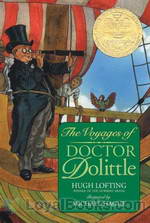 The Voyages of Doctor Dolittle
The Voyages of Doctor Dolittle
The delightfully eccentric Doctor Dolittle, rendered immortal on screen by the gifted Rex Harrison, has remained a firm favorite with generations of children ever since he made his debut in an earlier novel, The Story of Doctor Dolittle. In his second outing titledThe Voyages of Doctor Dolittle, the maverick physician takes on a new assistant, Tommy Stubbins. The story is structured as a first person account given by Tommy, who is now a very old man. The boy who was the son of the village cobbler first meets Doctor Dolittle when he takes a hurt squirrel to the doctor for treatment... | |
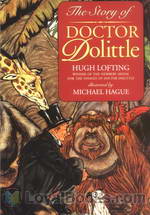 The Story of Doctor Dolittle
The Story of Doctor Dolittle
An adventurous children’s novel, The Story of Doctor Dolittle is the first book in the Doctor Dolittle series. The novel depicts the many adventures of Dr. John Dolittle as he learns the language of animals and takes on various feats including exotic travel, a dangerous encounter with pirates, and a mission to set right from wrong. The novel begins with the introduction of Dr. John Dolittle, an animal lover and respected physician, who lives in the small English town of Puddleby-on-the-Marsh with his unmarried sister... | |
 Doctor Dolittle's Post Office (version 2) (dramatic reading)
Doctor Dolittle's Post Office (version 2) (dramatic reading)
While working in Africa, the eminent naturalist John Dolittle sets out to create the best post office on earth, using his bird friends to carry messages and packages anywhere in the world in record time. Along the way, he also manages to foil a slave trader, enrich a kingdom, save a ship, and meet the oldest living creature on earth! - Summary by Devorah Allen Cast: Doctor Dolittle: ToddHWSpeedy the Swallow: TJ BurnsDab-Dab the Duck: Leanne YauJip the Dog: Rafe BallGub-Gub the Pig: Campbell SchelpThe... | |
By: Hyakuzō Kurata (1891-1943) | |
|---|---|
 Priest and His Disciples (Shaw Translation)
Priest and His Disciples (Shaw Translation)
At the age of twenty-six (at the height of the Great War in Europe), the religious pilgrim and maverick Kurata Hyakuzō wrote a profoundly philosophical play called "The Priest & His Disciples" ("Shukke to sono deshi"). This stage play is based on the life and teachings of the 13th century Buddhist priest Shinran (1173-1263) and quickly became immensely popular. Shinran, the historical founder of the True Pure Land School of Buddhism (Jōdo Shinshū), encounters the poor family of Hino Saemon and his wife Okane, and converses with them about how to live in circumstances of change and turmoil and hardship... | |
By: J. M. Barrie (1860-1937) | |
|---|---|
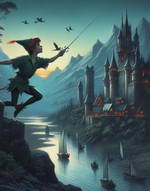 Peter Pan
Peter Pan
His name has become a metaphor for one who will never grow old. Peter Pan by JM Barrie is the story of a boy who remains a boy while the world around him changes. Sir James Mathew Barrie was a Scottish playwright and novelist whose works were received with great critical and commercial success in the late nineteenth and early twentieth century. He discovered the main inspiration for his creative genius in his friendship (and later guardianship) with the children of Arthur and Sylvia Llewellyn-Davies... | |
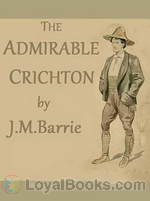 The Admirable Crichton
The Admirable Crichton
From the author of Peter Pan:Lord Loam, a British peer, considers class divisions to be artificial. He promotes his views during tea-parties where servants mingle with his aristocratic guests, to the embarrassment of all. Crichton, his butler, particularly disapproves of this.Loam, his family, a maid, and Crichton are shipwrecked on a deserted tropical island. The resourceful Crichton is the only one of the party with any practical knowledge. Eventually, social roles are reversed, and Crichton becomes the governor. | |
 Dear Brutus
Dear Brutus
At a house in the country 8 guests are invited to enter a magical wood to see what might have happened had they made a different choice in life. Even though they are warned away from the wood, they take a chance and enter. The title comes from Shakespeare: "The fault lies in our selves, dear Brutus, not in our stars...," and summarizes the theme of this play: given a second chance, will people still make the same mistakes? | |
By: James Elroy Flecker (1884-1915) | |
|---|---|
 King of Alsander (Dramatic Reading)
King of Alsander (Dramatic Reading)
First published in 1914, the King of Alsander is the only novel by James Elroy Flecker, best known as a poet, but also a noted scholar, linguist and diplomat. Flecker's love of learning, language and travel, and his keen satirical insight into politics are all in evidence in this phantasmagoric tale. As the author himself describes it: Here is a tale all romance - a tale such as only a Poet can write for you, O appreciative and generous Public - a tale of madmen, kings, scholars, grocers, consuls,... | |
By: James Joyce (1882-1941) | |
|---|---|
 Exiles
Exiles
Exiles is a play by James Joyce, who is principally remembered for his novels. It was rejected by W. B. Yeats for production by the Abbey Theatre. Its first major London performance was in 1970, when Harold Pinter directed it at the Mermaid Theatre. The basic premise of Exiles involves a love triangle between Richard Rowan (a Dublin writer recently returned from exile in Rome), Bertha (his common law wife) and his old friend Robert Hand (a journalist). (There are obvious parallels to be drawn with... | |
By: James Planché (1796-1880) | |
|---|---|
 Vampire; or, The Bride of the Isles
Vampire; or, The Bride of the Isles
Freely adapted from Lord Byron’s Fragment of a Novel, J.R. Planché’s The Vampire; or, the Bride of the Isles predates Dracula in its depiction of the vampire as a seductive, sophisticated, and noble figure. It also helped popularize the character of Lord Ruthven, a nefarious “creature of the night” who would later be immortalized in numerous films, operas, roleplaying games, novels and comic books. Set in the Scottish Isles, Planché’s play begins with our heroine having a prophetic vision of her own demise... | |
By: Jane Austen (1775-1817) | |
|---|---|
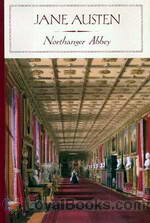 Northanger Abbey
Northanger Abbey
Jane Austen’s Northanger Abbey is a book about the life of Catherine Morland and her romantic relationships. The novel is divided into two parts; the first part begins with Catherine’s visit to Bath and her relationship with Henry Tilney and the other people she met there, and the second part starts with the arrival of Frederick Tilney and her visit to Northanger Abbey. This book alongside Pride and Prejudice and Sense and Sensibility is considered one of the major works of Jane Austen. The novel had undergone many revisions before its publication and it was even originally titled “Catherine... | |
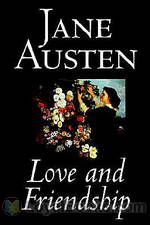 Love and Friendship
Love and Friendship
Begun when she was just eleven years old, Love and Friendship is one of Jane Austen's stories that very few readers may have encountered before. Austen experts feel that this story was written, like many others, only for the pleasure of her family and friends. It is scribbled across three notebooks, in childish handwriting, and the complete work is thought to have been written over a period of six or seven years. It is dedicated to one of her cousins, whom she was very close to, Eliza de Feuillide... | |
By: Jane D. Abbott (1881-1968) | |
|---|---|
 Highacres (Dramatic Reading)
Highacres (Dramatic Reading)
The story of a young mountain girl and her first year of city living and going to a high school. She knows nothing of town life, but she had dreams and longs to learn more and discover what the world is like outside of her mountain home. Go with her to the Westley's home, where she finds everyone kind, except the Wesley's oldest daughter, Isobel, who is proud and snubs her. With determination, and courage she enjoys her first year, and longs to continue at Highacres. | |
By: Jean Racine (1639-1699) | |
|---|---|
 Alexander the Great
Alexander the Great
Racine caused furour in the French theater community with his second play, Alexander the Great, when "The sensitive poet seems to have been disgusted by the manner in which it was being acted; for, a fortnight after it had been put on the boards at the Palais Royal [by Moliere], Moliere's company learned with astonishment and indignation that it was being simultaneously performed at a rival theatre." "The story of this drama is derived from Quintus Curtius, Plutarch, and Justin." Racine followed the rules of classical French dramatists: one main plot, action takes place in one day and at one location... | |
By: Jesse Lynch Williams (1871-1929) | |
|---|---|
 Why Marry?
Why Marry?
Why Marry? is a comedy, which "tells the truth about marriage". We find a family in the throes of proving the morality of marriage to a New Age Woman. Can the family defend marriage to this self-supporting girl? Will she be convinced that marriage is the ultimate sacredness of a relationship or will she hold to her perception that marriage is the basis of separating two lovers."Why Marry?" won the first Pulitzer Prize for Drama. | |
By: Johann Wolfgang von Goethe (1749-1832) | |
|---|---|
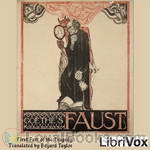 Faust, Part 1
Faust, Part 1
Faust is the protagonist of a classic German legend; a highly successful scholar, but also dissatisfied with his life, and so makes a deal with the devil, exchanging his soul for unlimited knowledge and worldly pleasures.Johann Wolfgang von Goethe's Faust is a tragic play in two parts. It is Goethe's most famous work and considered by many to be one of the greatest works of German literature.This first part of Faust is not divided into acts, but is structured as a sequence of scenes in a variety of settings. After a dedicatory poem and a prelude in the theatre, the actual plot begins with a prologue in Heaven and Scene 1 in Faust's study. | |
By: Johanna Spyri (1827-1901) | |
|---|---|
 Heidi (version 2 dramatic reading)
Heidi (version 2 dramatic reading)
"Heidi" takes us on a journey to the eventful childhood of a good-hearted girl from the Swiss Alps. A warm and loving story, full of touching moments, it reaches children and adults alike. It was written in 1880 and published in two parts: 1. Heidi's years of learning and travel. 2. Heidi makes use of what she has learned. This English translation from 1915 has "an especial flavor, that very quality of delight in mountain scenes, in mountain people and in child life generally, which is one of the chief merits of the German original... | |
By: John Fletcher (1579-1625) | |
|---|---|
 The Woman's Prize, or The Tamer Tamed
The Woman's Prize, or The Tamer Tamed
John Fletcher's comedy (probably written and performed around 1611) is a sequel to Shakespeare's The Taming of the Shrew, in which, as the title suggests, the tamer will be tamed. Petruchio, the shrew-tamer, has been widowed, and marries a second wife, Maria, a "chaste witty lady." At the instigation of her cousin Bianca, and with the fellowship of her sister Livia, Maria decides to go on strike for equal rights, refusing to behave as a proper 17th century wife. Fletcher's play addresses the issue of men and women's roles within marriage, a controversial issue for his day. | |
By: John Galsworthy (1867-1933) | |
|---|---|
 Skin Game
Skin Game
A small play in three acts. A kind of comic tragedy. The plot tells the story of the interaction between two very different families in rural England just after the end of the First World War. Squire Hillcrist lives in the manor house where his family has lived for generations. He has a daughter, Jill, who is in her late teens; and a wife, Amy, as well as servants and retainers. He is "old money", although his finances are at a bit of low ebb. The other family is the "nouveau riche" Hornblowers,... | |
By: John Kendrick Bangs (1862-1922) | |
|---|---|
 Peeps at People - Being Certain Papers from the Writings of Anne Warrington Witherup
Peeps at People - Being Certain Papers from the Writings of Anne Warrington Witherup
Written by a fictitious first-person narrator, this book puts a humorous spin on encounters with several famous people of the time. "I set forth from my office in London upon my pilgrimage to the shrines of the world's illustrious. Readers everywhere are interested in the home life of men who have made themselves factors in art, science, letters, and history, and to these people I was commissioned to go." -- Summary by TriciaG and from the book. | |
By: John Milton (1608-1674) | |
|---|---|
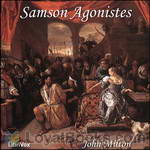 Samson Agonistes
Samson Agonistes
“The Sun to me is darkAnd silent as the Moon,When she deserts the nightHid in her vacant interlunar cave.”Milton composes his last extended work as a tragedy according to the classical Unities of Time, Place and Action. Nevertheless it “never was intended for the stage” and is here declaimed by a single reader.Samson the blinded captive, in company with the Chorus of friends and countrymen, receives his visitors on their varying missions and through them his violent story is vividly recalled... | |
By: John Rae (1882-1963) | |
|---|---|
 New Adventures of Alice (version 2 Dramatic Reading)
New Adventures of Alice (version 2 Dramatic Reading)
After reading and re-reading the book many time as a boy and wishing that Lewis Carroll would have written another Alice In Wonderland Book, John Rae began imagining what that girl would have gotten up to if he had done so. Telling these stories to his children over the years, where they were enthusiastically received, he finally decided to share them with the world. And here they are! The New Adventures of Alice | |
By: John Webster (c.1580 - c.1634) | |
|---|---|
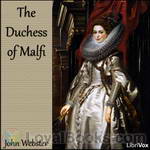 The Duchess of Malfi
The Duchess of Malfi
John Webster's bloody Jacobean tragedy exposes the decadence of the Italian court. The virtuous Duchess of Malfi, a young widow, secretly marries her steward Antonio, and is subsequently persecuted by her brothers: the sexually obsessed and eventually mad Ferdinand, and the corrupt Cardinal. | |
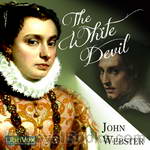 The White Devil
The White Devil
John Webster's The White Devil (1612) is a Jacobean revenge tragedy, replete with adultery, murder, ghosts, and violence. The Duke of Brachiano and Vittoria Corombona decide to kill their spouses, Isabella and Camillo, in order to be together, aided by the crafty and ambitious Flamineo, Vittoria's brother. Their actions prompt vows of revenge from Isabella's brother Francisco, the Duke of Florence, and Count Lodovico, who was secretly in love with her. The title refers to the early modern proverb that "the white devil is worse than the black," indicating the hypocrisy practiced by many of the characters in the play. | |
By: Johnston McCulley (1883-1958) | |
|---|---|
 Curse of Capistrano (Dramatic Reading)
Curse of Capistrano (Dramatic Reading)
The Curse of Capistrano is the first work to feature the fictional character Zorro . The story was later republished under the name The Mark of Zorro. The outlaw Zorro is Public Enemy #1 in southern California during the period of Mexican rule. But he's not a bad guy, really - he fights for justice for the oppressed. And when he meets the lovely Lolita, daughter of Don Pedro, who is on the governor's bad side, he has even more reason to fight. But she's being wooed by the rich and influential but wimpy Don Diego... | |
By: José Echegaray y Eizaguirre (1832-1916) | |
|---|---|
 Great Galeoto
Great Galeoto
"What touches us more closely is Echegaray's manipulation of the modern conscience, and its illimitable scope for reflection, for conflict, and the many-sided drama of temptation.... Not even Tolstoi, with all that delicacy and keenness of the Russian conscience, that profound seriousness, which moves us so variously in his great books, has a nobler consciousness of the dignity of suffering and virtue than this Spanish dramatist. And not less capable is he of a jesting survey of life." Echegaray won the Nobel Prize for literature in 1904... | |
By: Joseph Conrad (1857-1924) | |
|---|---|
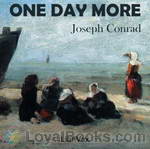 One Day More
One Day More
A one-act play. Eccentric Captain Hagberd has been waiting for years for his son to come home from the sea. He has scrimped and saved, outfitting a house for Harry to inherit upon his return, which will be in only "one day more." He has also planned that Harry will marry Bessie, the repressed maiden next door. Note: The recording was done outside, so there will be some ambient noise (airplanes, lawn mowers, birds, children... etc). | |
By: Joseph Smith Fletcher (1863-1935) | |
|---|---|
 Orange-Yellow Diamond
Orange-Yellow Diamond
| |
By: Josephine Turck Baker (1864-1942) | |
|---|---|
 Art of Conversation: Twelve Golden Rules
Art of Conversation: Twelve Golden Rules
Many of us find it challenging to speak to other people, for various reasons. Some of us are afraid of being called a bore. Others are worried that we will be accused of hogging attention. Many of us simply don't know what to talk about. This book is an entertaining and enlightening manual that may be able to help. Through a series of twelve dialogues between a man and a woman, we are introduced to twelve "golden rules" that will help us navigate the waters of interpersonal communication. He: Read by KevinS She: Read by Devorah Allen | |
By: Jules Verne (1828-1905) | |
|---|---|
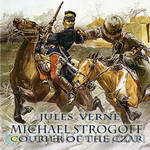 Michael Strogoff
Michael Strogoff
This is the account of the perilous mission of Michael Strogoff, courier for Czar Alexander II, who is sent from Moscow to the besieged city of Irkutsk, where the governor, brother of the Czar, has taken his last stand against a Tartar rebellion led by the fearsome Feofar-Khan. When telegraph lines are cut between the Russian Far East and the mainland, Strogoff must make his way through hostile territory to warn the governor of the return of the traitor Ivan Ogareff, a disgraced former officer who seeks vengeance against the Tsar’s family by the destruction of Irkutsk. | |
By: Karel Čapek (1890-1938) | |
|---|---|
 R.U.R. (Rossum’s Universal Robots)
R.U.R. (Rossum’s Universal Robots)
Helena Glory, as the daughter of a major industrial power's president, is a woman on a mission. She faces the island factory of Rossum's Universal Robots, the world's leading company in robotic engineering. She is convinced that these new creations called robots they make are deserving of rights like humans do. Everyone else is convinced robots are nothing more than tools for human use. Is it so, or is a robot rebellion becoming a more likely prospect as the robots start to seem more intelligent than first thought? First performed in English in 1922, R... | |
By: Kate Douglas Wiggin (1856-1923) | |
|---|---|
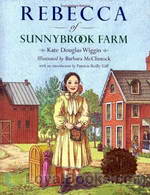 Rebecca of Sunnybrook Farm
Rebecca of Sunnybrook Farm
Eleven year old Rebecca Rowena Randall travels to Riverboro, Maine, to live with her spinster aunts, Jane and Miranda Sawyer. Her father has been dead for three years and her mother is unable to cope with her brood of seven growing children. Rebecca is being sent to her aunts' farm to try to improve her prospects in life and also ease the family's burden. The aunts had actually wanted her older and more placid sister, Hannah, who is more handy round the house to be sent, but Rebecca's mother sends the dreamy, more imaginative Rebecca instead... | |
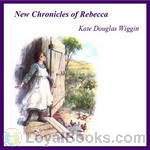 New Chronicles of Rebecca
New Chronicles of Rebecca
This book tells further stories from the period of Rebecca’s sojourn in Riverboro. | |
By: Kenneth McGaffrey (??-1938) | |
|---|---|
 The Sorrows of a Show Girl
The Sorrows of a Show Girl
Originally printed in The Morning Telegraph in New York, this is the story of Miss Sabrina, the show girl, and her ups and downs with the unpredictable theatrical industry and the Great White Way, the lights and glamour of Broadway. "In order to set myself right with both the public and the vast army of Sabrinas that add youth and beauty to our stage, and brilliancy and gaiety to our well known cafes, I wish to say that she is all that she should be...”- Kenneth McGaffrey | |
By: L. Frank Baum (1856-1919) | |
|---|---|
 Marvelous Land of Oz (version 2) (Dramatic Reading)
Marvelous Land of Oz (version 2) (Dramatic Reading)
The Marvelous Land of Oz Being an account of the further adventures of the Scarecrow and Tin Woodman and also the strange experiences of the highly magnified Woggle-Bug, Jack Pumpkin-head, the Animated Saw-Horse and the Gump; the story being A Sequel to The Wizard of Oz. | |
By: Langdon Mitchell (1862-1935) | |
|---|---|
 The New York Idea
The New York Idea
I find it very hard to classify "The New York Idea" under any of the established rubrics. It is rather too extravagant to rank as a comedy; it is much too serious in its purport, too searching in its character-delineation and too thoughtful in its wit, to be treated as a mere farce. Its title—not, perhaps, a very happy one—is explained in this saying of one of the characters: "Marry for whim and leave the rest to the divorce court—that's the New York idea of marriage." Like all the plays,... | |
By: Lewis Carroll | |
|---|---|
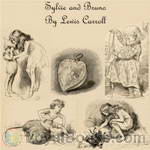 Sylvie and Bruno
Sylvie and Bruno
The novel has two main plots; one set in the real world at the time the book was published (the Victorian era), the other in the fantasy world of Fairyland. While the latter plot is a fairytale with many nonsense elements and poems, similar to Carroll’s Alice books, the story set in Victorian Britain is a social novel, with its characters discussing various concepts and aspects of religion, society, philosophy and morality. This book is the first of two volumes and the two intertwining stories are brought to a close in the second volume, Sylvie and Bruno Concluded. | |
By: Lillian Nixon Lawrence | |
|---|---|
 Little Dramas for Primary Grades
Little Dramas for Primary Grades
37 short and very short plays for young children - David O Readers: Linette Geisel: Camel, Big Black Dog, First Child, Camel, Grandma, Red Fox, Child, First Pig, Mrs. Dove, Third Chick, Littlest Fir Tree, French Doll, Mary, Camel, Sparrow, Mrs. Sparrow, Sheep, Little Tree, Columbine, Rose, Lobster, Jellyfish, Flowers, Sanja, Tree, Camel Tomas Peter: Lion, Odd Man, Lion, Fisherman, Hans, Fifth Pig, Mr. Jay, First Chick, Santa Claus, Tin Soldier, Old Year, Man, Thrush, Mr. Sparrow, Cow, Woodcutter,... | |
By: Lord George Gordon Byron (1788-1824) | |
|---|---|
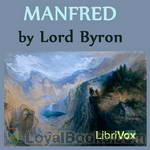 Manfred
Manfred
Manfred is a dramatic poem in three acts by Lord Byron, and possibly a self confessional work. A noble, Manfred, is haunted by the memory of some unspeakable crime. In seeking for forgetfulness and oblivion, he wanders between his castle and the mountains. He has several encounters with the people who try to assist him, as well as spirits that rule nature and human destiny. The poem explores themes of morality, religion, guilt and the human condition. | |
By: Lorenzo Da Ponte (1749-1838) | |
|---|---|
 Don Juan
Don Juan
Don Juan (Spanish), Don Giovanni (Italian) is a legendary, fictional libertine. Although the various iterations of the Don Juan myth show some variation, the basic story remains the same. Don Juan is portrayed as a wealthy, seductive libertine who devotes his life to seducing women, taking great pride in his ability to seduce women of all ages and stations in life. Don Giovanni, an opera composed by Wolfgang Amadeus Mozart with libretto by Lorenzo da Ponte, is arguably the best-known version. First performed in Prague in 1787, it inspired works by E... | |
By: Louisa May Alcott (1832-1888) | |
|---|---|
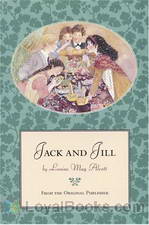 Jack and Jill
Jack and Jill
Louisa May Alcott, more famously known for her Little Women series, takes a familiar nursery rhyme and creates a whole novel out of it in one of her last books Jack and Jill: A Village Story. Though she continued to publish under the penname AM Barnard, this book probably marked the end of a particular writing phase in 1880. Jack and Jill is set in the fictional Harmony Village. On a December afternoon, the youngsters of the village are out enjoying the bracing cold and snow. The bright winter shines down as they have fun skating and sledding... | |
 An Old-Fashioned Girl
An Old-Fashioned Girl
Polly Milton, a 14-year-old country girl, visits her friend Fanny Shaw and her wealthy family in the city for the first time. Poor Polly is overwhelmed by the splendor at the Shaws’ and their urbanized, fashionable lifestyles, fancy clothes and some other habits she considers weird and, mostly, unlikable. However, Polly’s warmth, support and kindness eventually win her the hearts of all the family members. Six years later, Polly comes back to the city to become a music teacher. | |
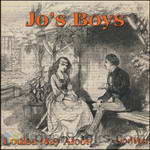 Jo's Boys
Jo's Boys
Jo’s Boys is the third book in the Little Women trilogy by Louisa May Alcott, published in 1886. In it, Jo’s “children”, now grown, are caught up in real world troubles. All three books – although fiction – are highly autobiographical and describe characters that were really in Alcott’s life. This book contains romance as the childhood playmates become flirtatious young men and women. The characters are growing up, going out into the world and deciding their futures. | |
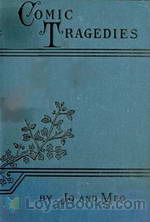 Comic Tragedies
Comic Tragedies
Fans of Louisa May Alcott's Little Women will remember the elaborate plays which the March sisters loved to perform. This volume, published after Alcott's death, is a compilation of the real plays written by her and her sisters, which were fictionalized in Little Women. | |
By: Lucian of Samosata | |
|---|---|
 Lucian's Dialogues Volume 1: The Dialogues of the Gods
Lucian's Dialogues Volume 1: The Dialogues of the Gods
The Dialogues of the Gods are 26 miniature dialogues mocking the Homeric conception of the Greek gods written in Attic Greek by Syrian author Lucian of Samosata. Almost 1900 years old, these dialogues still retain a lot of their original humor and wit. The cast list for dialogues with 3 or more readers is given below: Dialogue 8: Zeus: Owen CookHephæstus: KevinSStage directions: Foon Dialogue 9: Poseidon: ToddHWHermes: Owen CookStage directions: Foon Dialogue 13: Zeus: ToddHWAsklepius: FoonHerakles: KevinS Dialogue 20: Zeus: alanmapstoneHermes: Owen CookHera: FoonAthena: SoniaAphrodite: Sandra SchmitParis: Aaron WhiteStage directions: ToddHW Editor: Campbell Schelp | |
 Lucian's Dialogues Volume 2: The Dialogues of the Sea-Gods
Lucian's Dialogues Volume 2: The Dialogues of the Sea-Gods
The Dialogues of the Sea-Gods are 15 miniature dialogues mocking the Homeric conception of the Greek gods, originally written in Attic Greek by Syrian author Lucian of Samosata. Almost 1900 years old, these dialogues still retain a lot of their original humor and wit. - Summary by Foon Cast: Alpheius/Menelaus: ZoinkMeister Patrick Amphitrite/Panope: alanmapstone Cyclops: Nemo Delphines/Amymone: Leanne Yau Doris: Foon Enipeus: Rob Marland Galateia: Anita Sloma-Martinez Galene/Xanthus: Jeanne Viray Iphianassa: Pseudonymous Nerd Iris: Availle Notus: Stefan Von Blon Poseidon: Larry Wilson Protheus/Triton: Adam Bielka Thalassa: B L Newman Thetis: K... | |
 Lucian's Dialogues Volume 3: The Dialogues of the Dead
Lucian's Dialogues Volume 3: The Dialogues of the Dead
Dialogues of the Dead are 30 miniature dialogues mocking the Homeric conception of the Greek gods, originally written in Attic Greek by Syrian author Lucian of Samosata. Almost 1900 years old, these dialogues still retain a lot of their original humor and wit. - Summary by Foon The cast list for dialogues with 3 or more readers is given below: Dialogue 2: Kroesus: Lynette Caulkins Pluto: Alan Mapstone Midas: David Purdy Sardanapalus: TriciaG Menippus: Adrian Stephens Dialogue 3: Menippus:... | |
By: Lucy Maud Montgomery (1874-1942) | |
|---|---|
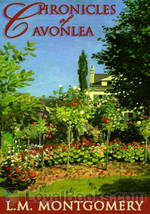 Chronicles of Avonlea
Chronicles of Avonlea
A collection of short stories first published in 1912, the book focuses on events occurring in the popular fictional village of Avonlea, which is notorious as the hometown of Anne Shirley. Comprised of 12 short stories, the Chronicles of Avonlea present a different view of the town, with the introduction of many new gripping characters, which prove to be just as endearing as their most renowned resident. Tales of everyday snippets of life proving to be humorous, identifiable, and heartwarming, the collection is an effective reinvigoration to the classic setting... | |
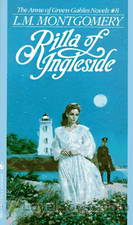 Rilla of Ingleside
Rilla of Ingleside
Rilla of Ingleside is the eighth book in the Anne of Green Gables series and focuses on the inspiring journey of Rilla Blythe, the youngest daughter of Anne and Gilbert, as she transforms from a carefree young girl into an enduring young woman swept into the chaos of war. Written from a female perspective, Montgomery accurately depicts a time in history, as she provides a contemporaneous account of the war and serves up the most emotional book in the series. Set during the First World War, the novel explores themes of coming of age, love, separation, and most importantly women’s roles during the war... | |
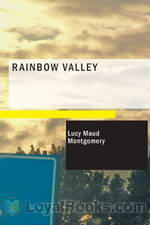 Rainbow Valley
Rainbow Valley
If you've read and loved Anne of Green Gables, you'd definitely like to add Rainbow Valley by Lucy Maud Montgomery to your collection. Published in 1919, it is the seventh book in the series and follows the further life and adventures of Anne Shirley. At Ingleside, Anne is now happily married to her childhood friend the devoted Gilbert Blythe and have now been together blissfully for fifteen years. They have six children. The book opens with the return of Anne and Gilbert (who is now a brilliant doctor) from a sojourn in London, where they had gone to attend a big medical congress... | |
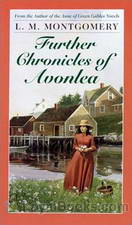 Further Chronicles of Avonlea
Further Chronicles of Avonlea
Further Chronicles of Avonlea is a collection of short stories by L.M. Montgomery and is a sequel to Chronicles of Avonlea. Published in 1920, it includes a number of stories relating to the inhabitants of the fictional Canadian village of Avonlea and its region, located on Prince Edward Island. The book was published without the permission of L.M. Montgomery, and was formed from stories she had decided not to publish in the earlier Chronicles of Avonlea. Montgomery sued her publishers, L.C. Page & Co, and won $18,000 in damages after a legal battle lasting nearly nine years. | |
 Kilmeny of the Orchard (version 2 Dramatic Reading)
Kilmeny of the Orchard (version 2 Dramatic Reading)
A short and sweet romance by the author of "Anne of Green Gables", Kilmeny of the Orchard is a story about a schoolteacher (Eric) who goes to Prince Edward Island and meets a beautiful but mysterious girl. Who is she? Why doesn't she speak? Why don't her guardians ever let her out? As Eric explores the answers to these questions, he slowly but surely falls in love with the mysterious girl. Will she ever speak to him? | |
 Story Girl (Version 2 Dramatic Reading)
Story Girl (Version 2 Dramatic Reading)
Carlisle on St. Edwards Island may appear to the outside world to be a quiet, rural farming town, but to a group of 8 teens and tweens, its forests, fields, and orchards are places of enchantment, wonder, and adventure! The Story Girl’s captivating tales toss Bev, Felix, Cecily, Felicity, Dan, Peter, Sara, and the Story Girl into mystical, magical, and spiritual worlds filled with princesses, sailors, mythological beings, and cosmological loves. The children find themselves running through ancient forests, shooting with the stars, sailing with treasure hunters, crossing rainbows with gods, spooking alongside the family ghosts, and discovering loves lost, loves found, and loves eternal... | |
By: Luigi Pirandello (1867-1936) | |
|---|---|
 Henry IV, A Tragedy in Three Acts
Henry IV, A Tragedy in Three Acts
A talented actor and historian falls off his horse in a historical pageant while playing the role of Henry IV. When he comes to, he believes himself to be Henry. For the next twenty years his nephew, Count de Nolli, funds an elaborate hoax in a remote villa, where actors play the roles of Henry's privy councillors and simulate the 11th century court.On request from his dying mother, de Nolli brings a Doctor referred to as the latest in a succession to try to cure Henry (whose real name, if it is not Henry, is never mentioned). All the action of the play occurs in this one day of the visit. | |
By: Marcus Minucius Felix | |
|---|---|
 Octavius
Octavius
This ancient Roman dialogue plays out as a religious debate between the Christian lawyer Octavius, and his close friend, a skeptical pagan named Caecilius. Caecilius is relatively agnostic, expressing skepticism towards both aspects of traditional Roman paganism, as well as towards his friend's newfangled Christian religion. Octavius attempts to give the reasons he has for his own beliefs and answer Caecilius' critiques. The author- Marcus Minucius Felix - plays the role of referee and observer. This is one of the earliest Latin texts to talk about Christianity, and describe how the new religion fit in the wider social context of the Roman world... | |
By: Mark Twain (1835-1910) | |
|---|---|
 The Adventures of Tom Sawyer
The Adventures of Tom Sawyer
If ever there was a story written based unabashedly on adventure and trouble, this is it. There are treasure hunts and murderers on the run in this book that will keep you spellbound. Tom and his half-brother, Sid, lived with their aunt, Polly. Tom was a boisterous young fellow who constantly found himself in rather awkward situations that landed him into trouble. These situations were however exceedingly hilarious. On one occasion, Tom dirtied his clothes in a fight and his punishment was to whitewash the fence the following day... | |
 Adventures of Huckleberry Finn (Dramatic Reading)
Adventures of Huckleberry Finn (Dramatic Reading)
In order to escape his cruel father, and led by a thirst for adventure, Huck Finn sets off down the Mississippi River with Jim, an escaped slave. But trouble is never far behind them, and their adventures are only beginning when they meet up with two men who claim to be a duke and a king! And that’s before Jim gets captured by none other than Tom Sawyer’s aunt and uncle… who mistake Huck for Tom. The hilarious adventures and scrapes of Huck, Jim, Tom, and others are brought to life in this dramatic reading... | |
By: Mary Roberts Rinehart (1876-1958) | |
|---|---|
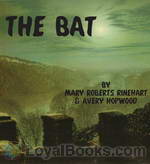 The Bat
The Bat
The novelization of the play of the same name that had an initial run of 867 shows on Broadway and has been performed all over the world and been made into three movies over a span from 1926 to 1959. An intricate mystery, with a wide cast of characters. (Summary by Alan Winterrowd) | |
By: Minot Judson Savage (1841-1918) | |
|---|---|
 Unitarian Catechism
Unitarian Catechism
This is a brief catechism of common Unitarian beliefs. As with most catechisms, the material is presented in a question and answer form. - Summary by KevinS | |
By: Molière | |
|---|---|
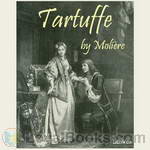 Tartuffe
Tartuffe
Jean-Baptiste Poquelin, known by his stage name Molière, was a French playwright and actor who is considered to be one of the greatest masters of comedy in Western literature. Among Molière's best-known works is Tartuffe or The Hypocrite, written in 1664. Though Tartuffe was received well by the public and even by Louis XIV, its popularity was lessened when the Archbishop of Paris issued an edict threatening excommunication for anyone who watched, performed in, or read the play.Tartuffe, a pious fraud who pretends to speak with divine authority, has insinuated himself into the household of Orgon... | |
By: Moliere (1622-1673) | |
|---|---|
 The Imaginary Invalid
The Imaginary Invalid
The Imaginary Invalid is a three-act comédie-ballet by the French playwright Molière. It was first performed in 1673 and was the last work he wrote. The plot centers around Argan, the 'imaginary invalid' who is completely dependent on his doctors and wants to marry his daughter to a doctor against her will, so that he will always have medical care freely available to him. In an ironic twist of fate, Molière collapsed during his fourth performance as Argan on 17 February and died soon after. | |
By: Myrtle Reed (1874-1911) | |
|---|---|
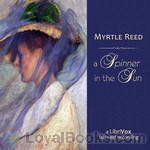 A Spinner in the Sun (dramatic reading)
A Spinner in the Sun (dramatic reading)
Myrtle Reed may always be depended upon to write a story in which poetry, charm, tenderness and humor are combined into a clever and entertaining book. Her characters are delightful and she always displays a quaint humor of expression and a quiet feeling of pathos which give a touch of active realism to all her writings. In "A Spinner in the Sun" she tells an old-fashioned love story, of a veiled lady who lives in solitude and whose features her neighbors have never seen. There is a mystery at the heart of the book that throws over it the glamour of romance. | |
By: Nahum Tate (1652-1715) | |
|---|---|
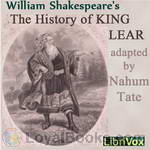 The History of King Lear
The History of King Lear
The History of King Lear is an adaptation by Nahum Tate of William Shakespeare's King Lear. It first appeared in 1681, some seventy-five years after Shakespeare's version, and is believed to have replaced Shakespeare's version on the English stage in whole or in part until 1838. Unlike Shakespeare's tragedy, Tate's play has a happy ending, with Lear regaining his throne, Cordelia marrying Edgar, and Edgar joyfully declaring that "truth and virtue shall at last succeed." Regarded as a tragicomedy, the play has five acts, as does Shakespeare's, although the number of scenes is different, and the text is about eight hundred lines shorter than Shakespeare's... | |
By: Nicholas Rowe (1674-1718) | |
|---|---|
 Jane Shore: A Tragedy
Jane Shore: A Tragedy
Covering some of the plot of Shakespeare's Richard III, Jane Shore focuses on the mistress of the late Edward IV, also known as "The White Queen". In this short tragedy, Jane tries to thwart Richard's rise to power while experiencing love, betrayal, forgiveness, and an unexpected visitor who arrives in disguise. Cast ListLord Hastings: Tchaikovsky Duke of Gloster: ToddHW Belmour: Adrian Stephens Sir Richard Ratcliffe: Wayne Cooke Sir William Catesby: Alan Mapstone Dumont: Tomas Peter Jane Shore: Michele Eaton Alicia: WendyKatzHiller Jane's Servant: Larry Wilson Alicia's Servant: B. Jones Stage Directions: Adrienne Prevost | |
By: Noël Coward (1899-1973) | |
|---|---|
 Vortex
Vortex
Noel Coward explores the darker side of the roaring twenties in this early play. It focuses on an ageing beauty who uses affairs with younger men to keep her feeling relevant, and her son who is back from Paris after a year performing as a pianist and acquiring a cocaine habit. Set in the effervescent world of the socialite set, with plenty of the wit and charm that Coward is known for, The Vortex is, nonetheless, a powerful depiction of people who struggle to be completely honest with themselves... | |
By: Oscar Wilde (1854-1900) | |
|---|---|
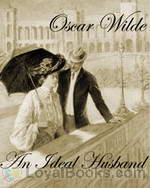 An Ideal Husband
An Ideal Husband
This story opens at a fashionable dinner party in Sir Robert Chiltern's home in the heart of London's stylish Grosvenor Square. One of Lady Chiltern's old school-friends, Mrs. Cheveley, a woman with a dubious past, accosts Sir Robert and threatens to expose a financial crime that he had once participated in, unless he agrees to finance a fraudulent construction project that she's promoting. Lady Chiltern is astounded when her husband who had been the severest critic of this project suddenly begins to speak in its favor... | |
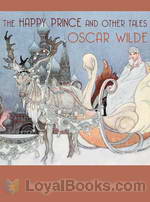 The Happy Prince and Other Tales
The Happy Prince and Other Tales
The Happy Prince and Other Tales (also sometimes called The Happy Prince and Other Stories) is an 1888 collection of stories for children by Oscar Wilde. It is most famous for The Happy Prince, the short tale of a metal statue who befriends a migratory bird. Together, they bring happiness to others, in life as well as in death. The stories included in this collection are:The Happy PrinceThe Nightingale and the RoseThe Selfish GiantThe Devoted FriendThe Remarkable RocketThe stories convey an appreciation for the exotic, the sensual and for masculine beauty. | |
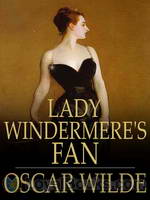 Lady Windermere's Fan
Lady Windermere's Fan
Lady Windermere’s Fan: A Play About a Good Woman is a four act comedy by Oscar Wilde, published in 1893. As in some of his other comedies, Wilde satirizes the morals of Victorian society, and attitudes between the sexes. The action centres around a fan given to Lady Windermere as a present by her husband, and the ball held that evening to celebrate her 21st birthday. | |
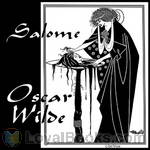 Salome
Salome
The original 1891 version of the play was in French. Three years later an English translation was published. The play tells in one act the Biblical story of Salome, stepdaughter of the tetrarch Herod Antipas, who, to her stepfather's dismay but to the delight of her mother Herodias, requests the head of Iokanaan (John the Baptist) on a silver platter as a reward for dancing the Dance of the Seven Veils. | |
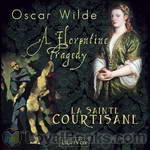 A Florentine Tragedy and La Sainte Courtisane
A Florentine Tragedy and La Sainte Courtisane
Two short fragments: an unfinished and a lost play. A Florentine Tragedy, left in a taxi (not a handbag), is Wilde’s most successful attempt at tragedy – intense and domestic, with surprising depth of characterisation. It was adapted into an opera by the Austrian composer Alexander Zemlinsky in 1917. La Sainte Courtisane, or The Woman Covered in Jewels explores one of Wilde’s great idées fixes: the paradox of religious hedonism, pagan piety. Both plays, Wildean to their core, revel in the profound sadness that is the fruit of the conflict between fidelity and forbidden love... | |
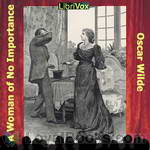 A Woman of No Importance
A Woman of No Importance
A Woman of No Importance is a play by Irish playwright Oscar Wilde. The play premièred on 19 April 1893 at London's Haymarket Theatre. It is a testimony of Wilde's wit and his brand of dark comedy. It looks in particular at English upper class society and has been reproduced on stages in Europe and North America since his death in 1900. | |
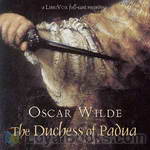 The Duchess of Padua
The Duchess of Padua
Guido Ferranti, a young man, travels to Padua with his friend Ascanio after receiving a mysterious letter from a stranger, claiming to know the true secret of Guido's birth. His plan of revenge goes awry, however, when he falls in love with his enemy's beautiful wife, the Duchess of Padua. | |
By: Plato (428-347) | |
|---|---|
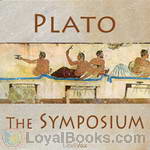 The Symposium
The Symposium
The Symposium (Ancient Greek: Συμπόσιον) is a philosophical book written by Plato sometime after 385 BCE. On one level the book deals with the genealogy, nature and purpose of love, on another level the book deals with the topic of knowledge, specifically how does one know what one knows. The topic of love is taken up in the form of a group of speeches, given by a group of men at a symposium or a wine drinking party at the house of the tragedian Agathon at Athens. Plato constructed the Symposium as a story within a story within a story... | |
By: Rachel Crothers (1878-1958) | |
|---|---|
 He and She
He and She
A feminist drama that gained considerable critical and commercial success when it originally ran on Broadway. The play is about a husband and wife who also happen to be artists. A socially conscious battle of the sexes ensues over professional jealousy and whether the woman's place in the home should be thrown over for occupational dreams. | |
By: Richard Brinsley Sheridan (1751-1816) | |
|---|---|
 The Rivals
The Rivals
The play is set in Bath in the 18th century, a town legendary for conspicuous consumption and fashion at the time. Wealthy, fashionable people went there to "take the waters", which were believed to have healing properties. The plot centres on the two young lovers, Lydia and Jack. Lydia, who reads a lot of popular novels of the time, wants a purely romantic love affair. To court her, Jack pretends to be "Ensign Beverley", a poor officer. Lydia is enthralled with the idea of eloping with a poor soldier in spite of her guardian, Mrs... | |
By: Richard Harding Davis (1864-1916) | |
|---|---|
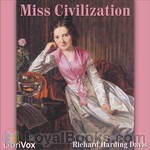 Miss Civilization
Miss Civilization
Miss Civilization, a one act comedy, tells the story of a young woman who matches wits with three burglars attempting to rob her house. | |
By: Robert Browning (1812-1889) | |
|---|---|
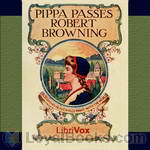 Pippa Passes
Pippa Passes
Pippa Passes was a dramatic piece, as much play as poetry, by Robert Browning published in 1841 as the first volume of his Bells and Pomegranates series. The author described the work as the first of a series of dramatic pieces. His original idea was of a young, innocent girl, moving unblemished through the crime-ridden neighbourhoods of Asolo. The work caused outrage when it was first published, due to the matter-of-fact portrayals of many of the area’s more disreputable characters – notably the adulterous Ottima – and for its frankness on sexual matters... | |
By: Rupert Hughes (1872-1956) | |
|---|---|
 Excuse Me! (Dramatic Reading)
Excuse Me! (Dramatic Reading)
What happens when a mix of lovers get stuck together on a coast-to-coast train? Mainly hilarity. There is every kind of couple imaginable. One serviceman and his bride-to-be are trying desperately to get married but can't find a clergyman to perform the rites. They don't know that right in their midst is a preacher disguised as a man of the world so he and his wife can enjoy a carefree vacation. Then there is a drunk mourning his separation from the wife who just happens to be on the same train. There is even a confirmed bachelor who discovers that a confirmed spinster is his long-lost love from years ago... | |
By: Ruth Ogden (1853-1927) | |
|---|---|
 Courage (Dramatic Reading)
Courage (Dramatic Reading)
Courage follows the story of Courage, a young 12-year-old orphaned girl, who adapts to to meeting and living with new people. She lives up to her name . . . but, what becomes of her in the end? - Summary by bhavyaCourage: Elsie SelwynLarry: Larry WilsonSylvia: LikeManyWatersMiss Julia: Beth ThomasMary Duff: FoonGentleman/David/Mr. Everett: TriciaGJohn: Josh KibbeyCelia Thaxter: Leanne YauBig Bob: Campbell SchelpMan, Captain, Man 2: BhavyaBoy: William WhiteDick, Father, Bruce: Elijah FisherMrs. Everett:... | |
By: Ruth Plumly Thompson (1891-1976) | |
|---|---|
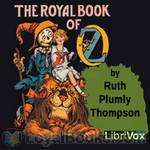 The Royal Book of Oz
The Royal Book of Oz
The Royal Book of Oz (1921) is the fifteenth in the series of Oz books, and the first to be written by Ruth Plumly Thompson after L. Frank Baum’s death. Although Baum was credited as the author, it was written entirely by Thompson. The Scarecrow is upset when Professor Wogglebug tells him that he has no family, so he goes to where Dorothy Gale found him to trace his “roots.” Then he vanishes from the face of Oz. Dorothy and the Cowardly Lion mount a search for their friend, but when that is successful, they will need to become a rescue party! | |
By: Sir Arthur Conan Doyle (1859-1930) | |
|---|---|
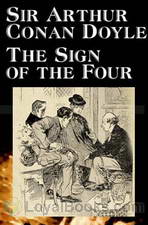 The Sign of the Four
The Sign of the Four
A secret shared by four convicts and two prison guards, a daughter in search of her missing father, a strange gift of a single pearl received every year, a fabulous treasure buried in the ancient Agra Fort in India, an eccentric detective being consulted to solve a deadly puzzle. All these events are set against the turbulent backdrop of the Great Indian Mutiny of 1857 in the second Sherlock Holmes novel by Sir Arthur Conan Doyle, The Sign of the Four. Mary Morstan, a lovely young woman, comes to the Baker Street lodgings shared by Holmes and Dr Watson... | |
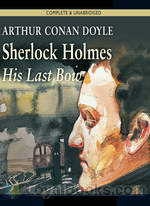 His Last Bow
His Last Bow
The disappearance of a German spy and the gathering storm that foretells the prelude to World War I is what greets you in this riveting book. The further you read the more mysteries unfold like secret submarine plans with some pages missing found in the hands of a corpse. There's also family insanity in Cornwall, a dead Spaniard and mafia hiding in an empty London flat. His Last Bow was published in the Strand Magazine circa 1908 and included several other short stories as well. Even during Sir Arthur Conan Doyle's own lifetime, Holmes had acquired cult status... | |
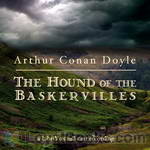 The Hound of the Baskervilles (dramatic reading)
The Hound of the Baskervilles (dramatic reading)
The Hound of the Baskervilles is the third of four crime novels by Sir Arthur Conan Doyle featuring the detective Sherlock Holmes. Originally serialised in The Strand Magazine from August 1901 to April 1902, it is set largely on Dartmoor in Devon in England's West Country and tells the story of an attempted murder inspired by the legend of a fearsome, diabolical hound. | |
 Return of Sherlock Holmes (version 2 Dramatic Reading)
Return of Sherlock Holmes (version 2 Dramatic Reading)
The Return of Sherlock Holmes is set three years after the detective fell to his death in the Reichenbach Falls in his final struggle with Moriarty. Or did he? In the first story of the series Holmes explains to Watson what really happened that day, followed by twelve more adventures of the dynamic duo including two of Doyle's own favourite stories: The Dancing Men and The Second Stain. Other notable characters in this book include Black Peter and Charles Augustus Milverton. Watson: Cori SamuelHolmes:... | |
 Four Noncanonical Sherlock Holmes Short Stories
Four Noncanonical Sherlock Holmes Short Stories
Although the Sherlock Holmes canon traditionally consists of four novels and 56 short stories written by Arthur Conan Doyle, there are many Sherlock Holmes stories outside the canon. Most of these noncanonical stories were written by authors other than Doyle, but there are four short stories about Holmes written by Doyle that are nonetheless excluded from the canon, for various reasons. This album consists of these four noncanonical stories. The first story, "The Field Bazaar", was first published in 1896 in a special issue of a University of Edinburgh student newspaper called The Student... | |
By: Sophocles (495-406 BC) | |
|---|---|
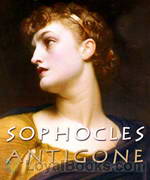 Antigone
Antigone
This is the final installment in Sophocles's Theban Plays, following Oedipus Rex and Oedipus at Colonus. Oedipus's daughter Antigone deliberately breaks the laws of Thebes when she buries her brother's body and is sentenced to death. She clashes with Creon, the King of Thebes, over what constitutes justice and morality: the laws of the state or the laws of the individual. | |
 Electra
Electra
Sophocles' play dramatizes the aftermath of Agamemnon's murder by his wife Clytemnestra and her lover Aegisthus. His daughter Electra is hungry for revenge and longs for the return of her brother Orestes to help her achieve her ends. | |